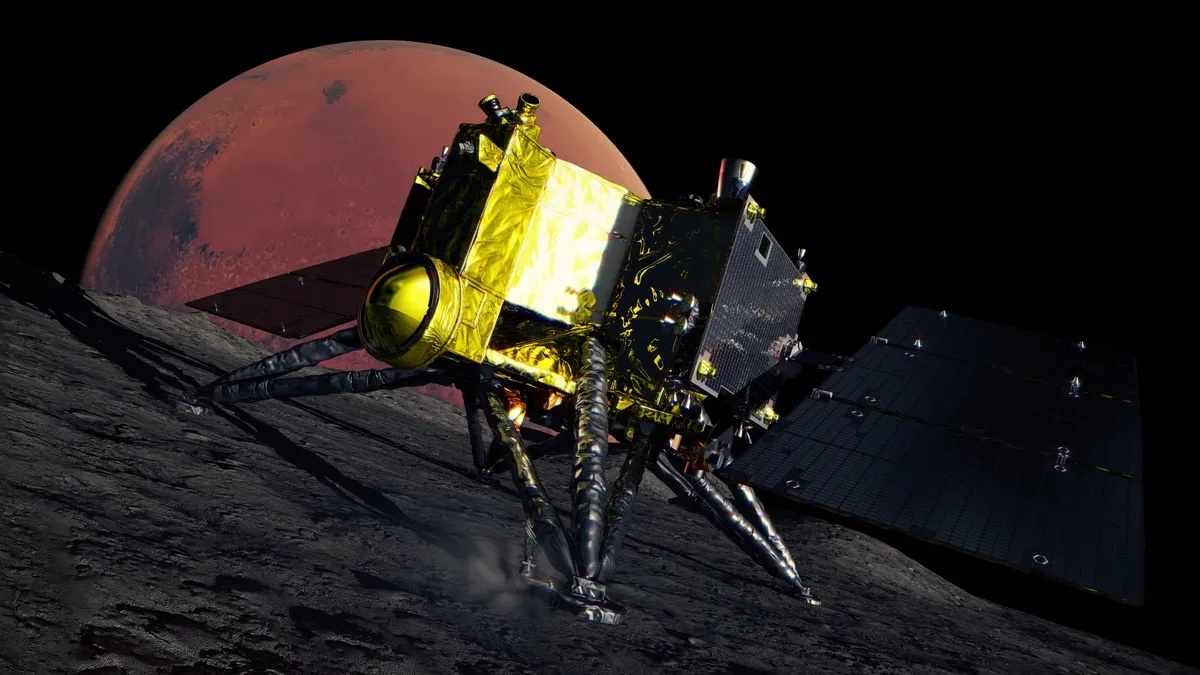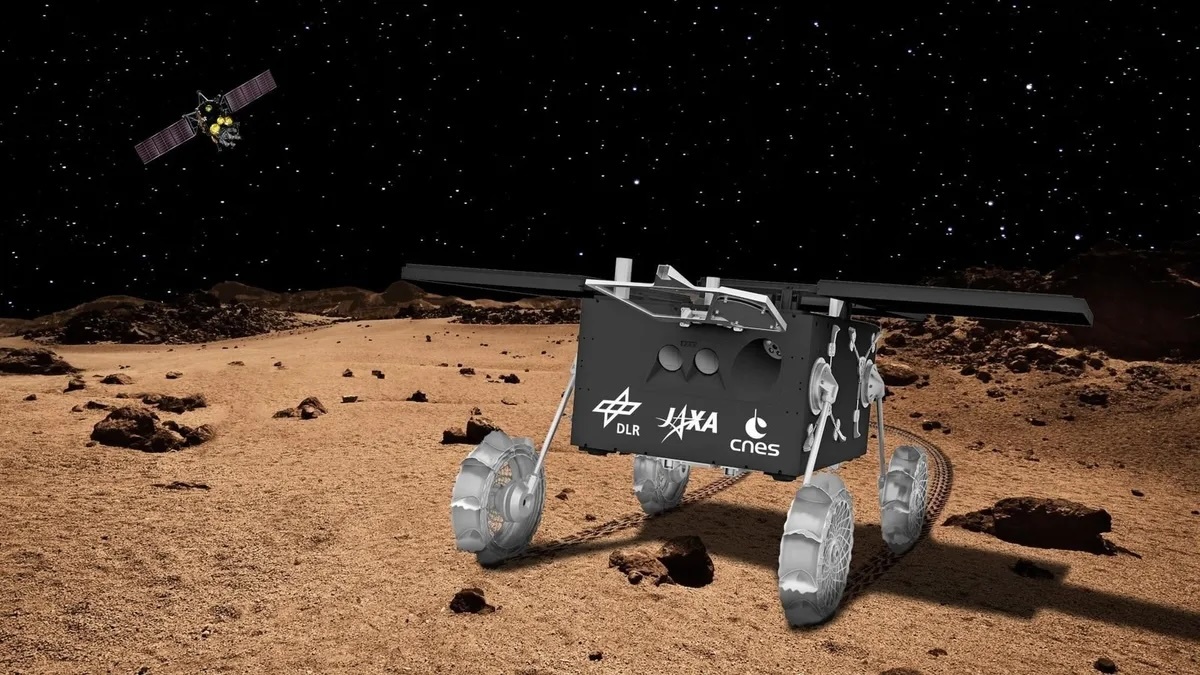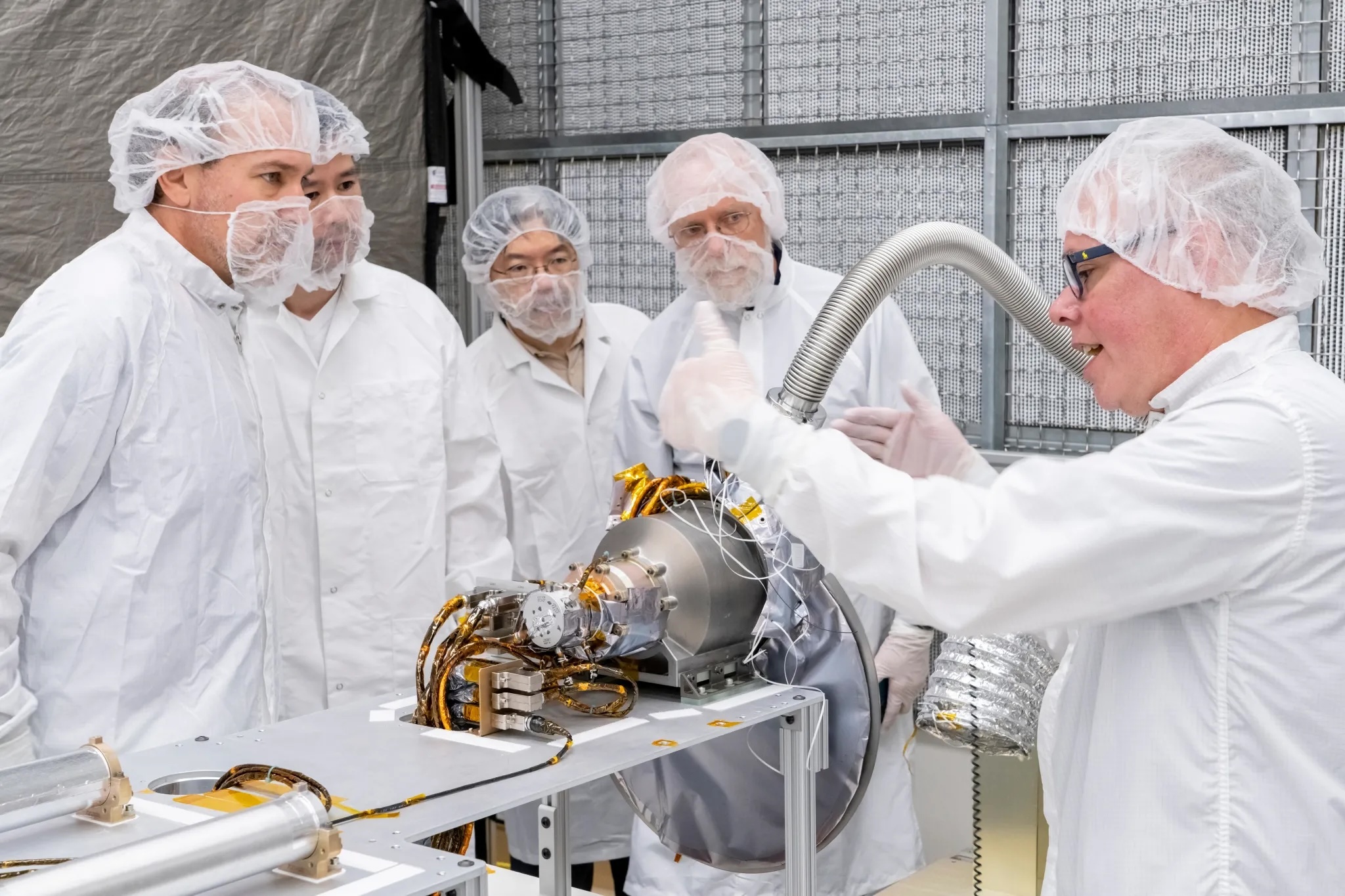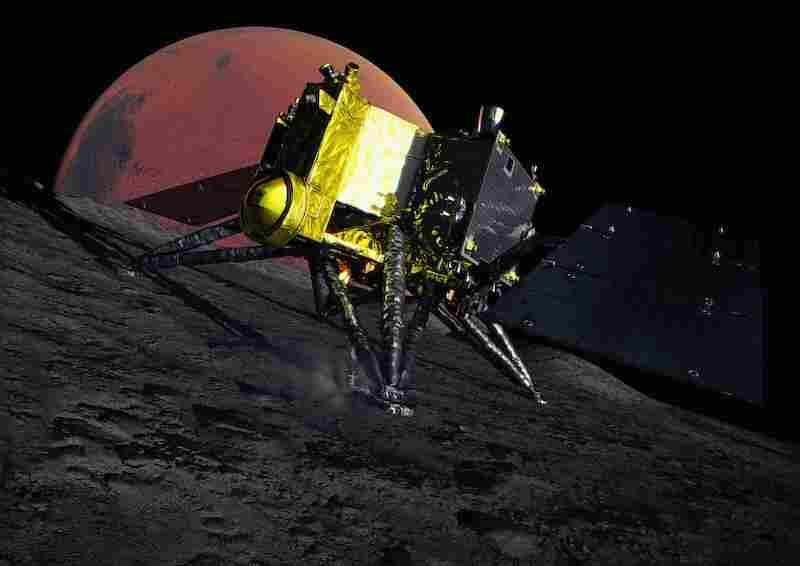NASA’s Mars-moon Exploration with Gamma Ray and Neutrons (MEGANE) instrument, developed by the Johns Hopkins Applied Physics Laboratory (APL) in Laurel, Maryland, in collaboration with colleagues from Lawrence Livermore National Laboratory (LLNL) in California, will play a major role in the MMX mission, which aims to characterize and determine the origin of Mars’ moons Phobos and Deimos and deliver a sample from Phobos to Earth.
11.12.2023
Japan may delay its Mars moon sampling mission MMX due to rocket problems
JAXA needs to get its H3 rocket flying successfully early next year
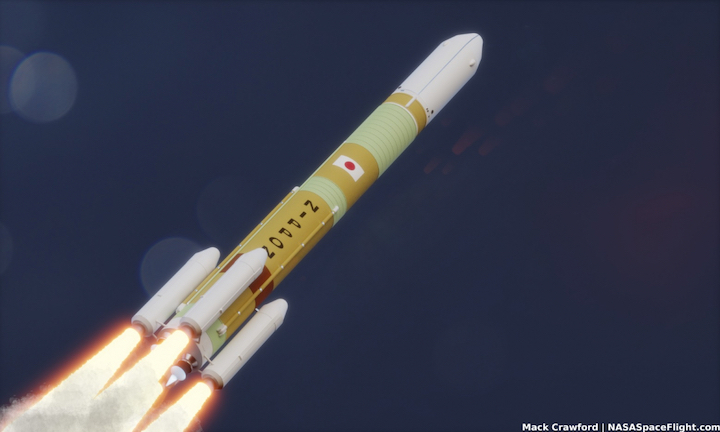
Japan’s ambitious mission to explore the two mini moons of Mars could be facing a lengthy delay.
The Japan Aerospace Exploration Agency’s (JAXA) Martian Moons eXploration(MMX) is scheduled to launch in September 2024, taking advantage of a once-every-26-months launch window to the Red Planet.
Arriving in Mars orbit in August 2025, coinciding with the World Expo in Osaka, MMX would attempt landings on Phobos to collect a minimum 0.35 oz (10 grams) of samples. It would then make flybys of the smaller moon Deimos before a module containing the samples is sent back towards Earth, arriving in 2029.
However the agency’s new H3 rocket, which will launch MMX, failed on its debut flight in March. JAXA stated last month that it is aiming to attempt a second launch of the flagship H3 rocket by the end of March next year, NHK reported.
The outcome of that mission—which will benefit from lessons learned and measures taken after the failure—will likely determine if MMX can launch on schedule.
Further issues would see MMX delayed to late 2026. However rescheduling the mission may prove challenging, as a number of high priority launches will complicate matters, Kyodo News reports.
It is unknown if JAXA would consider using another launcher, such as the SpaceX Falcon Heavy, to launch MMX.
When it does launch, MMX aims to determine if Phobos and Deimos are captured asteroids or fragments that coalesced after a giant impact with Mars. It will also gain new insights into the history of Mars.
The mission will also carry a small rover for exploring Phobos, developed by the German Aerospace Center (DLR) and the French Center National Space Research (CNES).
Quelle: SC
----
Update: 6.01.2024
.
Japan delays MMX Mars moon sample-return mission to 2026
A key goal of MMX is to determine if Phobos and its fellow moon Deimos are captured asteroids or the coalescence of fragments blown into orbit after a giant impact struck Mars. It also promises to bring new understandings regarding the history of the Red Planet and insights into planetary formation in the wider solar system.
The MMX mission will include flybys of Deimos, which is smaller and more distantly orbiting than Phobos. The spacecraft will also carry a small rover for exploring Phobos, developed by the German Aerospace Center (DLR) and the French Center National Space Research (CNES).
Quelle: SC
----
Update: 12.01.2024
.
Japanese Mars mission launch delayed to 2026
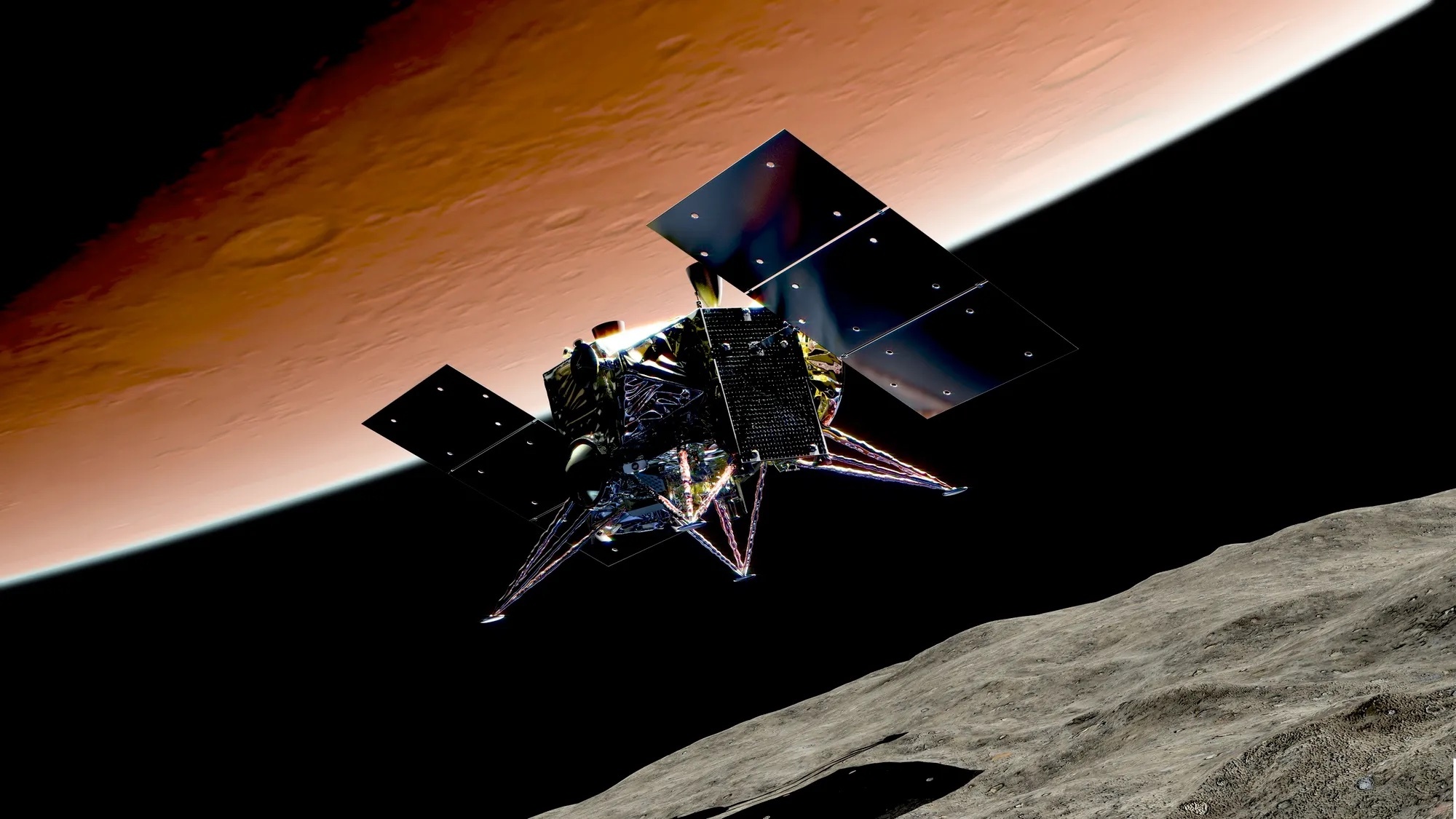
JAXA’s Martian Moons eXploration (MMX) mission will now launch in 2026, two years later than previously planned. Credit: JAXA
NEW ORLEANS — The launch of a Japanese mission to collect samples from the Martian moon Phobos and return them to Earth, previously scheduled for later this year, has slipped to 2026.
The Japanese space agency JAXA confirmed the two-year delay in the launch of the Martian Moons eXploration, or MMX, mission, blaming it in part on the H3 rocket that will launch the spacecraft.
“Owing to evaluate the demonstration results of the second H3 rocket test vehicle and considering the importance to ensure sufficient time for preliminary verification of MMX on the ground, the launch schedule for Japanese rockets has been reviewed,” the agency said in a Jan. 10 statement to SpaceNews.
The H3 made its inaugural launch in March 2023 but failed to reach orbit when its second stage engine did not ignite, likely because of an electrical issue. JAXA announced Dec. 27 it had scheduled the second H3 launch for as soon as Feb. 14, carrying a test payload and two smallsats.
MMX was scheduled to launch in September 2024. It would have entered orbit around Mars in August 2025 and remained there for three years before heading back to Earth, returning in September 2029.
The decision to delay MMX to 2026, the next available window for a Mars mission, was approved in December by the Japanese government’s Space Development Strategy Headquarters as part of a revision of its Schedule for the Basic Plan on Space Policy. The mission announced the change on social media at the time, but with no explanation for the delay.
MMX is a spacecraft weighing about 4,000 kilograms carrying a suite of instruments to study Mars and its two small moons, Phobos and Deimos. Among them is MEGANE, a gamma-ray and neutron spectrometer being developed in cooperation with NASA. Also on MMX is a small rover jointly developed by the French space agency CNES and German aerospace agency DLR to explore Phobos.
The primary mission of MMX is to touch down on Phobos and collect samples of Phobos for return to Earth. Scientists plan to analyze the samples to determine if Phobos, and likely Deimos, were formed by a collision of a larger object with Mars, or are small asteroids that were captured into orbit by the planet. Under the revised mission schedule, MMX will return the samples to Earth in 2031.
Quelle: SN
----
Update: 14.02.2024
.
IDEFIX Phobos rover sent to Japan ahead of mission to Mars
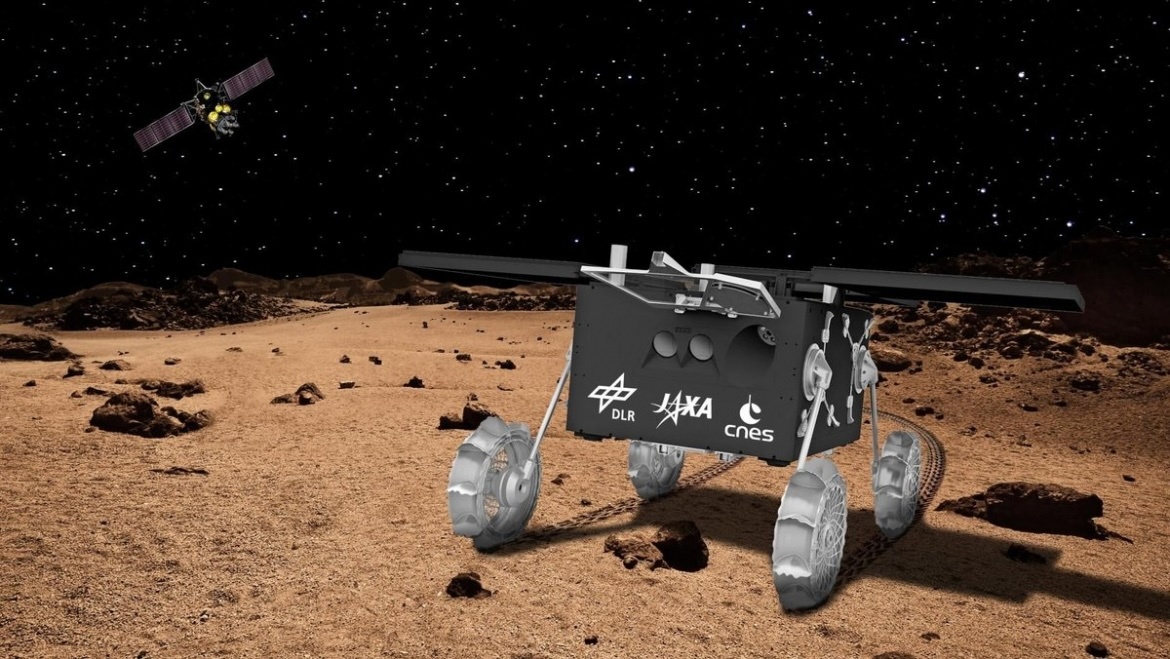
The Martian Moons eXploration (MMX) mission is JAXA’s lead mission that plans to survey and explore Mars’ two moons, Phobos and Deimos. While the Japanese agency will build the main payload, the German Space Agency (DLR) and the National Centre for Space Studies (CNES) will contribute to the mission. “IDEFIX,” a small secondary payload, will ride with MMX and is planned to touch down on the surface of Phobos in 2029.
IDEFIX recently finished construction, and DLR and CNES are set to deliver the rover to JAXA for integration with the MMX mission.
The IDEFIX rover
IDEFIX is named after the dog from the comics “The Adventures of Asterix.” The name refers to the wordplay “Idée Fixe,” which roughly translates to an obsession or a passion that somebody fixates on.
The rover itself weighs 25 kilograms, is 51 centimeters long, and is designed to explore up to 100 meters of Phobos’ surface. During one of MMX’s closest approaches to Phobos, the rover will be released at an altitude between 40 and 100 meters above the surface and touch down on Phobos.
The drop utilizes the low gravity of Phobos, which will allow IDEFIX to just fall onto the surface, roll, and then raise itself to prepare for the roughly three-month-long mission. The gravity of Phobos is only roughly 1/1000th of the gravity of Earth, which can be attributed to the moon’s small size. Phobos only has a diameter of approximately 27 kilometers.
“Thanks to the low gravity, IDEFIX will need between 60 to 80 seconds from release to the touchdown on Phobos. The impact will be with less than one meter per second,” explained Professor Markus Grebenstein, who is DLR’s project lead for IDEFIX, in an interview with NSF.
IDEFIX’s mission duration will be around 100 days and is limited by the fact that the main MMX mission will eventually move away from Phobos. The MMX spacecraft will be used as a relay for IDEFIX, so without the spacecraft orbiting near Phobos, IDEFIX will no longer be able to communicate and operate on the surface. In addition to considering MMX’s position around Phobos during the IDEFIX mission, the team also had to factor in Martian eclipses to ensure they were maximizing solar exposure and minimizing Phobos nights.
Volume and weight were a main consideration when building IDEFIX, as the rover had to be as lightweight and small as possible in order to fit as a secondary payload on MMX. After touchdown, the sequence to raise itself is critical and automated. If the rover fails to raise itself, it will not be able to generate enough solar power to continue its mission. Without adequate solar power, IDEFIX’s instruments would be unable to operate, and other rover systems would be unable to heat themselves — which would be a major issue given that Phobos’ surface can get as cold as -112 degrees Celsius.
“What motivates us are several factors. Of course, one of them is attempting the first touchdown on the surface of Phobos. It will also be the first time that we attempt to land on a celestial body with such low gravity, and of course, being the first to collect surface probes from Phobos motivated us. It´s a once-in-a-lifetime chance,” said Professor Grebenstein
IDEFIX’s construction was completed in July 2023, with testing beginning soon after. Testing included several drop tests, where DLR and CNES tried to simulate all the different potential ways the rover could hit the surface and roll on the ground.
About the touchdown sequence, Grabenstein said, “The Rover is designed to always perform the same sequence once it touches down. No matter how we land, the sequence should always lead to the rover getting on its wheels. This makes the whole process way more redundant against potential malfunctions.”
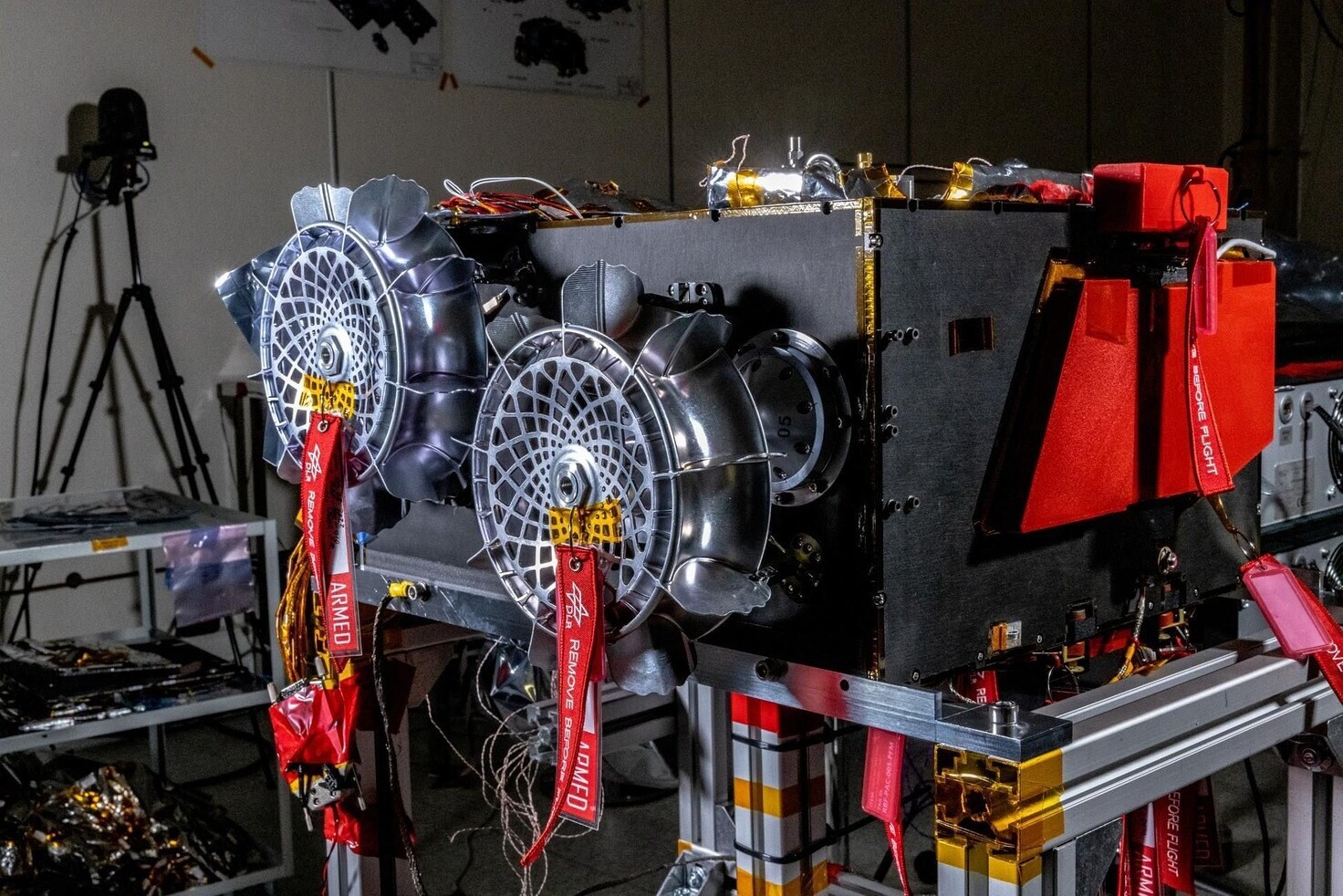
The rover’s wheels are also designed in a special way. “The main challenge is the low contact pressure, thanks to the low gravity. But a second challenge is also the fact that we do not exactly know the properties of the ground. […] There is a potential that the ground is more like powder snow, which is the reason for this paddle wheel-like design,” Professor Grebenstein said.
IDEFIX’s lead scientist, Dr. Stephan Ulamec, adds, “You saw the available pictures we have from Phobos. They are fairly low-resolution. It looks like it could be a regolith area, which it most likely is, but it could also be a rubble surface. We will just get to know this once we are there.”
The motors that are needed to turn the rover are comparable to other motors DLR already uses for the finger movement of robotic arms at its science center, with special modifications made to optimize for working in Phobos’ low gravity environment. Grabenstein said, “We already used these motors for our hand-arm robotics system, medical robotics, and even for an in-space robotic arm.”
The science of IDEFIX
Phobos is the innermost and largest of the two moons of Mars, the other being Deimos. It is an irregularly shaped moon with a radius of 11 kilometers and an orbital altitude of 6,000 kilometers above the Martian surface. In fact, Phobos orbits closer to its planet than any other moon in the solar system. For comparison, Earth’s moon orbits at an altitude of roughly 384, 399 kilometers from Earth’s surface, or about 64 times farther than Phobos.
One of the most pressing questions in all of planetary and solar system science is Phobos’ (and Deimos’) origin. Both moons look similar to C-type asteroids, which suggests that Phobos and Deimos could actually be two asteroids that happened to pass too close to Mars and were captured by the planet’s gravity. However, scientists have questioned Mars’ ability to capture an object like Phobos so close to its atmosphere.
“One thing you will be able to observe when looking closer at Phobos is two different materials. You will see the more red background and the more blue-ish surface. This is not fully understood yet,” said Dr. Ulamec.
“Looking at Phobos, it reminds me of a certain class of asteroids. These kinds of asteroids are rich in carbon and are potential culprits for delivering matter to develop life. […] However, one problem with this theory is the orbital dynamics of capturing such objects. There are theoretical scenarios where a potential double asteroid constellation could result in such a scenario. This works great on paper but sounds more unlikely with two moons of Mars,” Dr. Ulamec explained.
Another theory that is possible is the theory of a heavy impact at Mars that helped form these moons. Regarding the theory, Ulamec says, ”These theories also work very well on paper. However, this does not explain the spectrum and colors of the moons.”
IDEFIX will be equipped with four main instruments, which will help to understand the origin and exact sediment details of Phobos. The first is a NavCam, which is a CNES-provided instrument for optical-stereo navigation. The second is RAX, a Raman-spectrometer, which was developed by DLR, JAXA, and the Spanish space agency INTA. RAX will be used to generate a structural fingerprint of Phobos.
Next is WheelCams, which are two optical sensors at two wheels that will research the interaction between IDEFIX’s wheels and Phobos’ surface material. The WheelCams were developed by CNES. The final instrument is MiniRad, a DLR-developed infrared radiometer, which was developed around the design of the MARA instrument on the MASCOT-lander.
Dr. Ulamec explained, “Of course, the main goals of IDEFIX and MMX will be to uncover the real history behind the origin of Phobos and also understand the context of the whole Mars system better.”

MMX is set to launch no earlier than December 2026 on a Japanese H3-24 rocket. The full mission plans to land once or twice on Phobos, collect 10 grams of samples, and then perform several flybys of Deimos before returning to Earth.
(Lead Image: Artist’s depiction of IDEFIX on Phobos. Credit: DLR/CNES/JAXA)
Quelle: NSF
+++
Launch Schedule of the second H3 Launch Vehicle (H3TF2) [Rescheduled]
February 14, 2024 (JST)
Japan Aerospace Exploration Agency
The Japan Aerospace Exploration Agency (JAXA) hereby announces that the launch date of the second H3 Launch Vehicle (H3TF2: Test Flight No. 2) from the Tanegashima Space Center (TNSC) has been scheduled as follows, as a result of today’s weather assessment.
The launch time will be announced once confirmed.
| Launch date | : February 17, 2024 (Saturday) |
|---|---|
| Launch Window | : 9:22:55 (JST) through 13:06:34 (JST) The time is the 24-hour clock |
| Reserved Launch Period | : February 18, through March 31, 2024 |
Quelle: JAXA
----
Update: 7.03.2024
.


